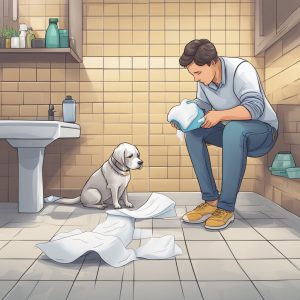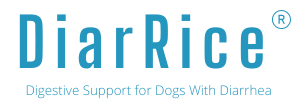Best Way to Clean Up Dog Diarrhea: A Step-by-Step Guide

When faced with the unpleasant task of cleaning up dog diarrhea, it’s important to act quickly to prevent stains and odors from setting into your floors. Diarrhea in dogs can occur due to various reasons, from dietary indiscretion to more serious health issues. Whether it’s a one-time accident or a symptom of chronic diarrhea, knowing the best ways to tackle the mess can save you time and maintain the cleanliness of your home.
Dealing with dog diarrhea requires a multi-step approach that starts with the immediate removal of the waste and ends with treating any residual stains or smells. Using the right home remedies for dog diarrhea clean-up will not only restore your space but can also help prevent your dog from seeing the area as an acceptable bathroom spot. Additionally, understanding the causes of diarrhea in dogs can be essential in preventing future episodes, ensuring your pet stays healthy and your home remains clean.
Key Takeaways
- Swift action and appropriate cleaning methods are crucial for managing dog diarrhea.
- Home remedies and commercial cleaners can effectively address stains and odors.
- Prevention strategies can reduce the likelihood of future diarrhea incidents.
Immediate Clean-Up Steps
When dealing with dog diarrhea, quick action can prevent stains and odors from setting in. The process involves three key steps: ensuring personal safety, removing solid waste, and absorbing excess moisture.
Protecting Yourself and the Area
Before you start, protect yourself by wearing latex gloves to avoid direct contact with feces. Cover the surrounding area with paper towels or a plastic bag to prevent the mess from spreading to clean parts of the carpet, wood, or grass.
Removing Solids
If there are any solids in the diarrhea, carefully scoop them up with a paper towel or a plastic bag turned inside out. Removing solids first makes the rest of the cleaning process more manageable.
Blotting the Moisture
After removing solids, blot the area with paper towels to absorb as much moisture as possible. Do not scrub, as this can push the diarrhea deeper into carpet fibers or wood grain. Douse the affected area with cold water and continue blotting until the paper towel no longer picks up a significant mess.
Addressing Stains and Odors
When dealing with the aftermath of dog diarrhea, two main concerns are removing the unsightly stains and neutralizing the unpleasant odors. It’s essential to act promptly to prevent the affected areas from becoming permanently damaged or continuously emitting a bad smell.
Stain Removal Techniques
Begin by removing any solid waste with a scoop or a piece of cardboard, being careful not to spread the stain. Apply a cleaning solution specifically designed to break down pet waste. If the diarrhea is on a carpet, a carpet cleaner can be quite effective. For hard surfaces, wiping with a solution and then using a vacuum can remove residue.
- Vinegar: A solution of equal parts white vinegar and water can be sprayed onto the stain, allowed to sit for a few minutes, and then blotted dry.
- Enzymatic cleaner: Liberally apply an enzymatic cleaner to the affected area, following the manufacturer’s instructions. These cleaners break down the proteins in the diarrhea, lifting the stain.
Odor Neutralization
Once the stain is treated, focus on neutralizing any lingering odors. Enzymatic cleaners often double as deodorizers, but additional steps can ensure the area is left smelling fresh.
- Baking soda: Sprinkle baking soda over the cleaned area and let it sit for several hours before vacuuming it up. This can absorb and neutralize odors.
- Hydrogen peroxide: In some cases, a mixture of hydrogen peroxide (always test for colorfastness first) can help to deodorize as well as disinfect.
Home Remedies
If commercial cleaners are not at hand, everyday household items can be enlisted in the cleanup process, but use them with caution and always test for safety on inconspicuous areas first.
- DIY Cleaning Paste: Mix baking soda and water to create a paste. Apply it to the affected area, then scrub gently after letting it sit.
- Vinegar and Baking soda: For a two-step approach, after cleaning, deodorize by first applying vinegar and then sprinkling baking soda.
Each approach to stain removal and odor neutralization requires careful application and patience. Remember, the quicker you tend to an accident, the less chance there is for a stain or odor to settle in.
Preventing Future Accidents
To prevent future accidents, address your dog’s diet and health, and reinforce positive bathroom habits. Carefully managing what your dog eats and its routine can lead to a significant decrease in incidents of diarrhea.
Diet and Health Management
Dietary indiscretion and food intolerance are common causes of diarrhea. Ensure your dog avoids eating garbage or spoiled food, which can lead to “garbage gut.” Introduce any diet changes gradually to prevent intestinal upsets. A diet consisting of easily digestible foods such as white rice and canned pumpkin can help solidify stools. It’s important to consult your vet to rule out food allergies, intestinal parasites, bacterial infections, or foreign bodies.
To support digestive health, consider adding probiotics and prebiotics to your dog’s diet; they can help maintain a healthy gut flora. In cases of diarrhea, a bland diet or bone broth may be recommended by your vet to soothe your pet’s digestive system.
Training and Habits
Routine is crucial. Establish a regular feeding and bathroom schedule for your dog. This predictability aids in regulating bowel movements and reduces the chance of accidents. Training your dog to go outside at specific times and immediately after meals can reinforce good bathroom habits.
Watch for signs of discomfort, such as lethargy, loss of appetite, or retching, as these can precede diarrhea. Recognizing these signs early can help you take preemptive action to prevent an accident. Regular vet check-ups are vital to detect any underlying health issues that could lead to diarrhea, such as vomiting, fever, or weight loss.
Professional Cleaning and Equipment
Dealing with dog diarrhea on carpets can sometimes require more than a simple clean-up. In such cases, professional carpet cleaning services and specialized equipment can ensure thorough sanitization and odor removal.
When to Call a Professional
You should consider calling a professional carpet cleaner when dealing with persistent stains, large affected areas, or if you have a high-pile or delicate carpet. Professionals have access to high-grade equipment and cleaning solutions that are more effective than household products.
Cleaning Supplies Checklist
- Carpet Cleaner: An industrial-strength carpet cleaner can remove tough stains and sanitize the area.
- Enzymatic Cleaner: Look for cleaners with active enzymes to break down waste residue.
- Vacuum: A powerful vacuum is essential to clean up remaining debris after the initial cleanup.
- Dish Soap: A gentle, pet-safe dish soap can be used for pre-treating stains.
- Commercial Products: Commercial products designed for pet stains may be recommended by professionals.
- Cleaning Solution: A professional-grade cleaning solution can disinfect and neutralize odors.
- Pet-Safe Cleaner: Ensure any cleaner used is safe for pets to prevent harmful chemicals from affecting your furry friend.
Frequently Asked Questions
These FAQs provide targeted solutions for cleaning up dog diarrhea from various surfaces.
How can I effectively clean dog diarrhea off of carpeted surfaces?
Begin by removing as much of the waste as possible, using a scooping tool or plastic bags to avoid pushing it deeper into the carpet fibers. For a deeper clean, consider using an enzymatic cleaner designed for pet messes, which enters the carpet fibers to break down and eliminate the waste and odor.
What steps should I take to clean up dog diarrhea from hardwood floors without causing damage?
Quickly absorb the diarrhea with paper towels, being careful not to spread it further. Use a hardwood-friendly cleaner, disinfect the area, and make sure the surface is dry to prevent any warping or staining.
Is there an efficient method to clean dog diarrhea on concrete surfaces?
Scrape up the solids first, then wash the area with a solution of hot water and dish detergent. For persistent stains or odors, using a mixture of bleach and water can be effective, followed by thorough rinsing.
What is the safest way to handle and dispose of diarrhea from dogs when outdoors?
Protect yourself with gloves, use a shovel or a bag to pick up the diarrhea, and place it directly into a trash bag or container. Secure the waste and wash your hands immediately after disposal.
Can baking soda be used to neutralize and clean dog diarrhea, and if so, how?
Yes, after removing the bulk of the waste, sprinkle baking soda over the affected area to help absorb moisture and odors. Let it sit before vacuuming or sweeping it away.
Are there techniques to reduce the smell and prevent gagging while cleaning up dog diarrhea?
Ventilate the area well by opening windows or using fans. A mask can also help filter out odors. Lightly scented sprays or candles can be used after cleaning to further mitigate the smell.
